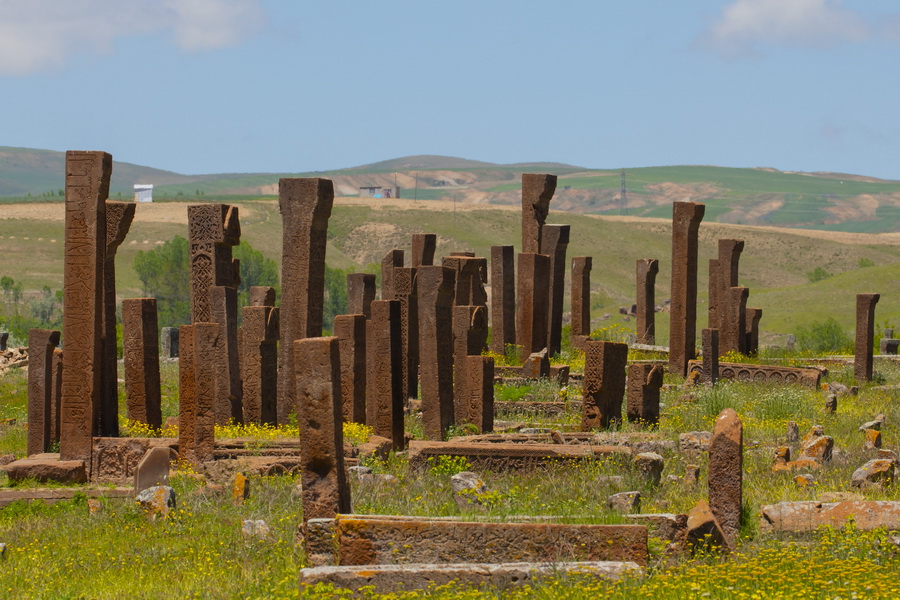
Intangible cultural heritage of Turkey (Türkiye) puts together the country’s deep-down traditions, such as oral storytelling, social practices, performing arts, craftsmanship, and many more readopted by generations. Turkey ranks among the top five countries with the most UNESCO-inscribed intangible legacy, from the witty wisdom of Nasreddin Hoca anecdotes to the heroic legends of Dede Korkut.
Arts, Craftsmanship, and Performances
Recognised by UNESCO in 2023, Ahlat stonework is the traditional expertise of mining, shaping, and decorating volcanic stone from Turkey’s Nemrut Mountain. These stones are used to build houses, mosques, tombs, and fountains.
Traditional Craftsmanship of Çini-making, thus hand-making glazed tiles and ceramics, was included in UNESCO’s list in 2016. These tiles are rich in floral and geometric motifs, which once decorated palaces and mosques. The traditional clay-firing process preserves their vivid hues, ensuring that this time-honoured art remains a defining feature of Turkish architectural beauty.
A profound visual art where pigments float on water before being transferred onto paper, Ebru, or Turkish marbling, was added to the list in 2014. Practiced in workshops across Turkey, ebru masters combine precise techniques with improvisation and create designs that have decorated book covers and calligraphic works.
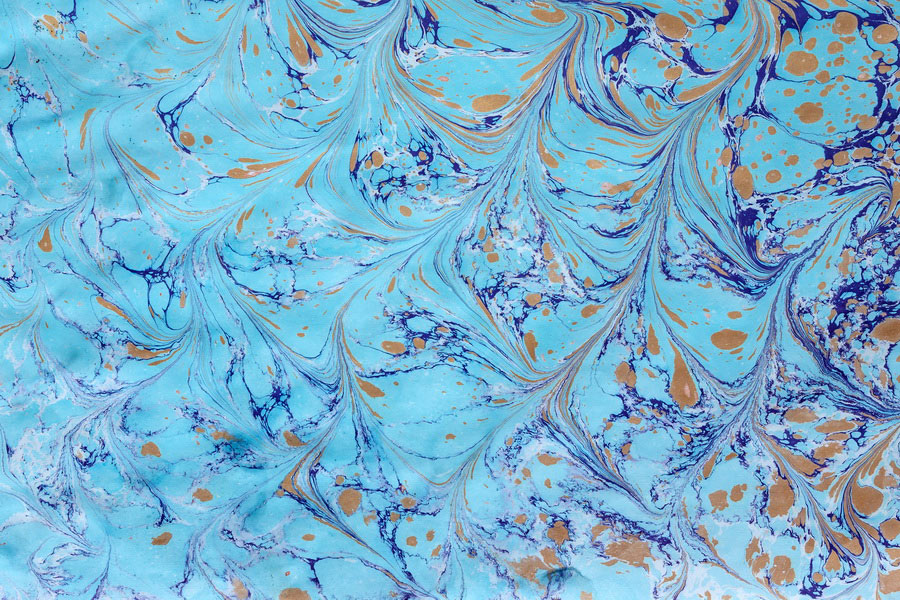
Hüsn-i hat, or Islamic calligraphy, is an ancient practice of symmetrical letter-writing in Arabic, where skilled calligraphers use handmade tools to create elegant script for religious texts, poetry, and architectural decoration.
Stretching from Afghanistan to Azerbaijan, Iran, Turkey, Tajikistan, Turkmenistan, and Uzbekistan – thus along the Silk Road – Sericulture, known as İpek böcekçiliği and the traditional production of silk for weaving originated in China. Farmers cultivate silkworms from egg to cotton and spin threads that become luxurious fabrics, carpets, and ceremonial garments.
In Turkey’s traditional shadow theatre, Karagöz, a single puppeteer animates humorous characters on a cotton screen using light and handcrafted leather figures, harmonising storytelling, music, and satire to entertain and preserve cultural identity.
Remaining vital to Azerbaijani and Turkish musical culture, the craftsmanship and performance of the mey, also known as balaban in Azerbaijan, was inscribed in 2023. Made from apricot or plum wood, this double-reed instrument is one of the favourites at weddings and festivals. It carries a distinct and mournful tone.
Sharing its roots with Persian and Ottoman manuscript illustration traditions, the Turkish miniature painting (Türk minyatür) is an art form of small-scale paintings on books, textiles, ceramics, and architecture from the olden days.
Another entry to the UNESCO heritage list, Turkey, is Sedef kakma, the craftsmanship of mother-of-pearl inlay, a detail-orientated practice of inserting mother-of-pearl into wooden objects such as Koran (Quran) cases, mirrors, jewel cases, or musical instruments in Azerbaijan and Turkey.
The art of illumination, known as Təzhip, Tazhib, Zarhalkori, Tezhib, or Naqqoshlik, remains a refined tradition in Azerbaijan, Iran, Tajikistan, Turkey, and Uzbekistan. It is an old art of decorating manuscripts, calligraphy, and miniatures with gold and colourful paints. People use it to decorate the Holy Quran and texts of history.
The bagpipe tradition, known as gayda in North Macedonia and tulum in Turkey, was inscribed in 2023. Made from wood and animal skin, this folk instrument is played at highland weddings and seasonal gatherings, keeping the regional musical heritage of the Black Sea and Anatolian mountains alive.
Cultivation and Culinary Customs, and Celebrations
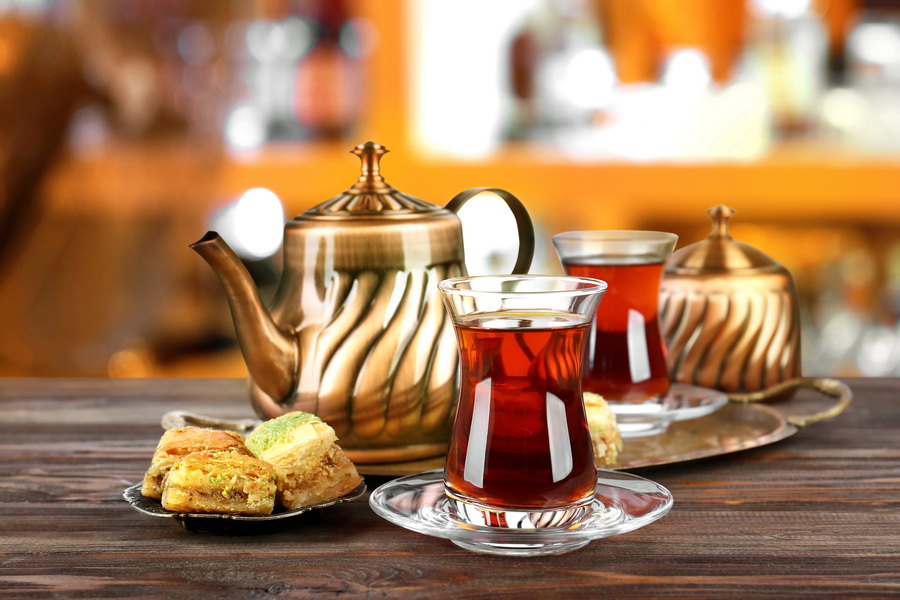
Part of Azerbaijan and Turkey’s UNESCO Intangible Cultural Heritage, tea culture (çay) is an essential part of social life, symbolising hospitality and connection. Black tea is brewed in traditional double kettles, çaydanlık, and served in pear-shaped glasses with sweets, jams, and spices.
Beyond a brewing technique, Turkish Coffee Culture (Kahve) cultivates social traditions, from engagement ceremonies to fortune-telling using coffee grounds. This time-honoured habit was added to UNESCO's list in 2013.
The ceremonial Keşkek tradition is a lively process involving young villagers, earning it a place on UNESCO's list as a cherished culinary custom. Keşkek, a wheat and meat dish, is prepared in large pots for weddings and religious events.
In 2016, Turkish Collective Flatbread-Making, known as Yassı ekmek yapma, entered UNESCO's list as a shared heritage of Turkey, Iran, Kazakhstan, and Kyrgyzstan. This tradition involves communal preparation and baking of lavash, yufka, and other breads using tandır, sac, or kazan. It continues in rural areas.
Traditional Olive Cultivation (Zeytin Yetiştiriciliği) in Turkey involves traditional methods such as grafting, pruning, and harvesting. It is linked to rituals, festivals, and community traditions, standing for peace and wisdom.
Traditional Festivals, Games, and Sports
Dokuz Korgol is a Mangala game also known as Togyzqumalaq, Toguz Korgool, and Göçürme in other countries. Traditional Intelligence Strategy Game tests strategic thinking and is played on engraved boards with small stones or seeds.
A festival on May 5 and 6 celebrating nature’s renewal with rituals for health, fertility, and prosperity, Spring Celebration, Hıdrellez, was added to the list in 2017 and unites communities through music and dance.
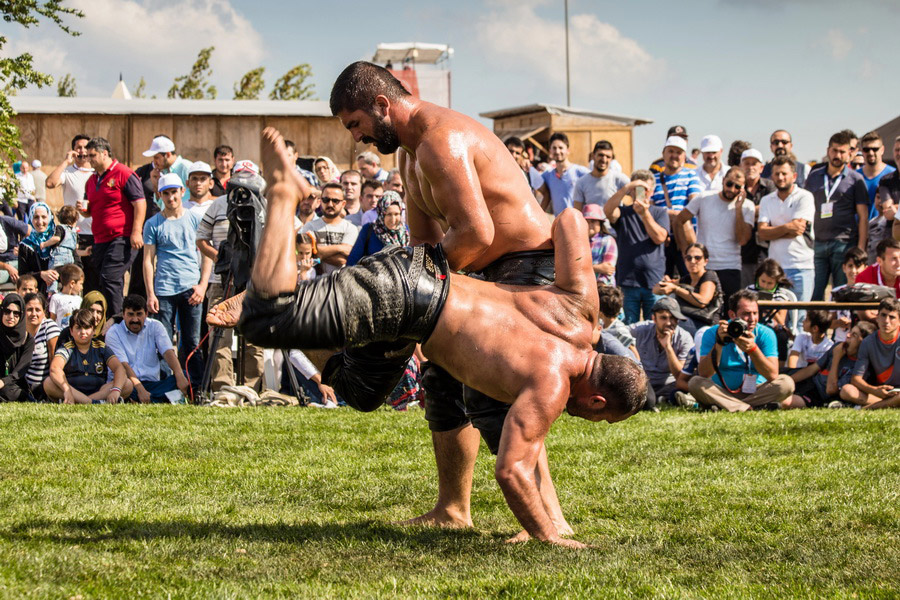
Held annually in Edirne from June 30 to July 6, in the KırkpınarYağlı Güreş Festivali, or Oil-Wrestling Festival, wrestlers compete for the Kırkpınar Golden Belt. Accompanied by traditional music and costumes, it is Turkey’s oldest sporting event and a UNESCO-listed tradition.
Originating in Manisa, the Mesir Paste Festival is a 400-year-old festival that celebrates mesir macunu, a medicinal paste made from a blend of 41 herbs and spices. Once made to cure Ayşe Hafsa Sultan, Suleiman the Magnificent's mother, it is now distributed during an annual event that unites locals and holidaymakers from March 21 to 24. UNESCO inscribed it in 2012.
Marking the arrival of spring on March 21, Nowruz (Nevruz), rooted in Zoroastrianism and ancient Persian traditions, is the most acclaimed celebration of renewal in the Islamic world. It features rituals, feasts, and gatherings that symbolise unity and peace. Inscribed by UNESCO in 2016, it is shared by Turkey and 11 other nations, notably in Central Asia.
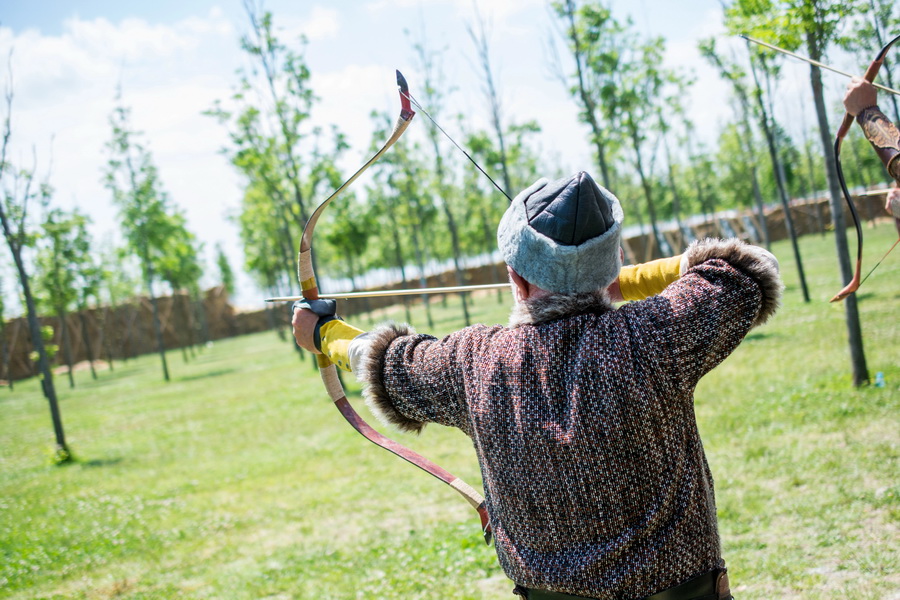
Traditional Turkish Archery, known as Türk Okçuluğu, is a historic martial art with foot and horseback disciplines, using handcrafted bows and arrows. Recently, more women and organisations have joined the sport.
Religious Tradition
The evening meal breaking the daily fast in Ramadan, Iftar and its Traditions, encourages family, charity, and social bonding through shared meals, prayers, and storytelling.
The Mevlevi Sema Ceremony, the whirling dervishes' spiritual Sufi dance, rooted in Mevlâna Rumi’s teachings, symbolises a connection with the divine. Celebrated every December in Konya, it was proclaimed a UNESCO masterpiece in 2005.
Semah, Alevi-Bektaşi Ritual, a sacred dance performed during Alevi-Bektaşi religious ceremonies, expressing spiritual devotion through rhythmic movements and music.
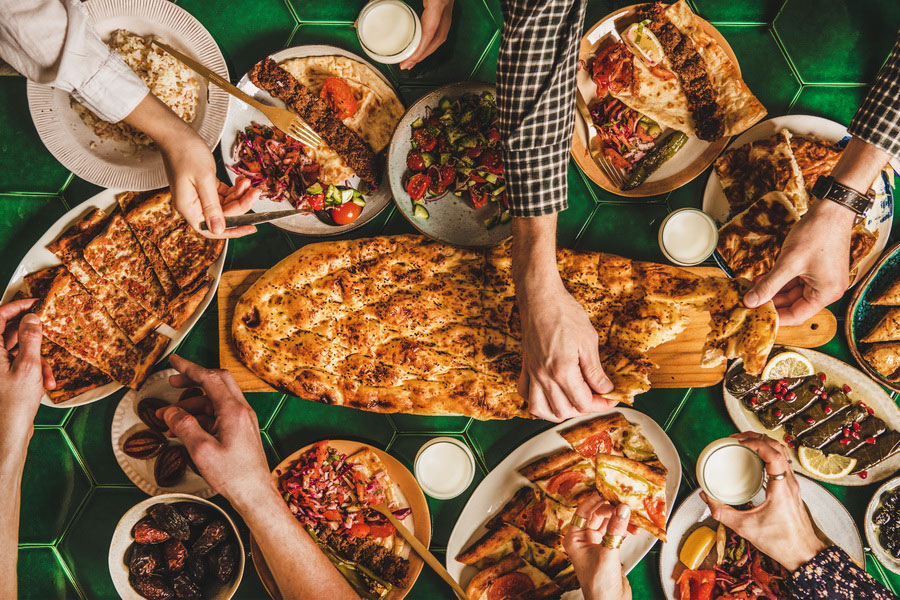
Traditional Social Interactions
Âşıklık (Minstrelsy), the tradition of poetry, performed by wandering musicians using the saz, preserves storytelling and folk songs. It remains central to Turkish life, particularly in weddings and festivals.
A rare intangible Turkish heritage, Islik dili, the Whistled Language, was developed by mountain communities to communicate across long distances. Though once widely used, it is now threatened with extinction due to mobile phones and changing lifestyles. Despite this, local communities are working to preserve this cultural heritage in Turkey.
Heritage of Dede Korkut Kitabı, also known as Korkyt Ata or Dede Qorqud is a collection of heroic legends, folk tales, and traditional music. Dede Korkut, a wise figure, appears in these stories. The tales use a musical instrument called the Kobyz to mimic nature sounds, like a wolf’s howl. These stories and melodies emphasise heroism, unity, and respect for nature, making them a vital part of Turkey’s cultural heritage.
The art of the meddah, or public storyteller, entertains audiences with humorous impersonations and vivid tales, keeping oral storytelling alive in Turkish coffeehouses and public gatherings.
Telling Tradition of Nasreddin Hoca Anecdotes celebrates Nasreddin Hoca (Nasreddin Hodja), a legendary philosopher known for his witty and wise stories. His anecdotes, told across Turkish heritage sites and festivals, often break social norms with humour and unexpected twists. They are used in conversations, media, and education to entertain and teach moral lessons. The tradition remains a key part of the intangible cultural heritage in Turkey.
Traditional Sohbet Meetings are regular gatherings where men discuss social and cultural topics while enjoying folk music, dances, and local food. Open to men over 15, these meetings strengthen community bonds and pass down values like respect, justice, and tolerance. Members who skip without reason may face a fine. This Turkish cultural heritage plays an important role in preserving folk literature and traditions.
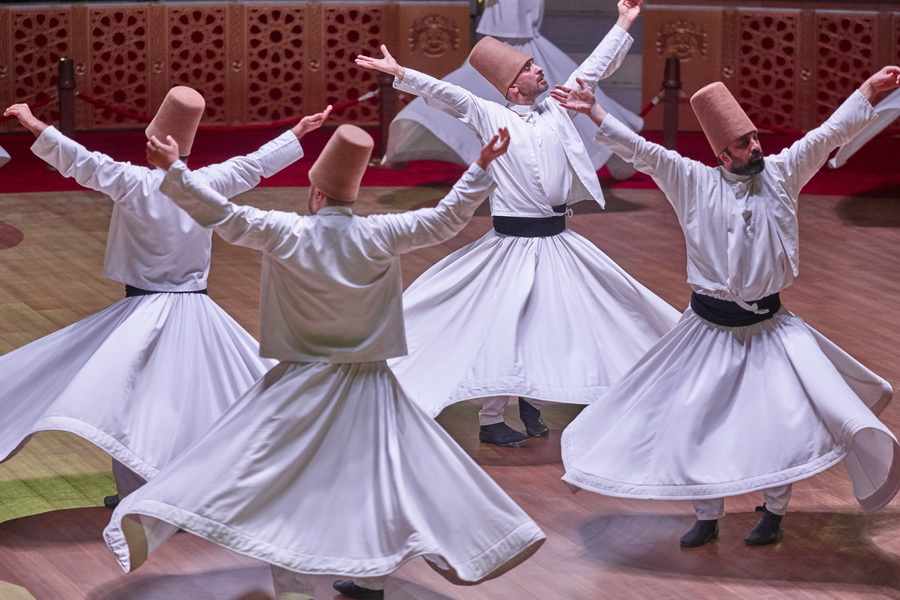
Learn more about the tangible UNESCO World Heritage Sites in Turkey.

